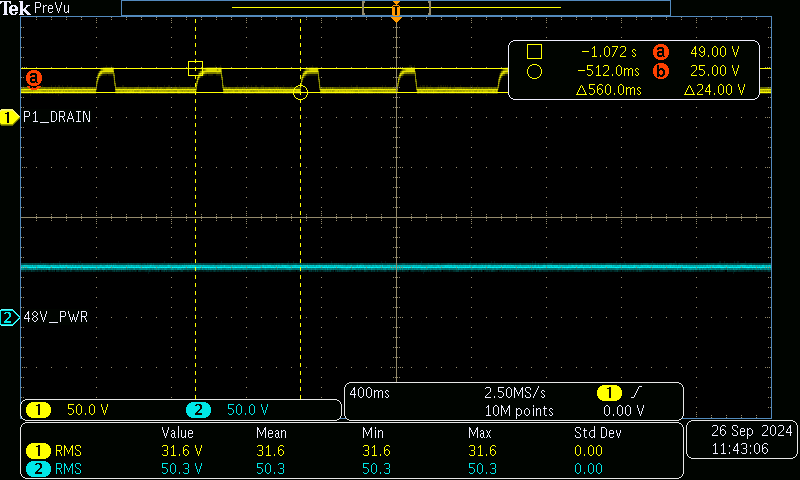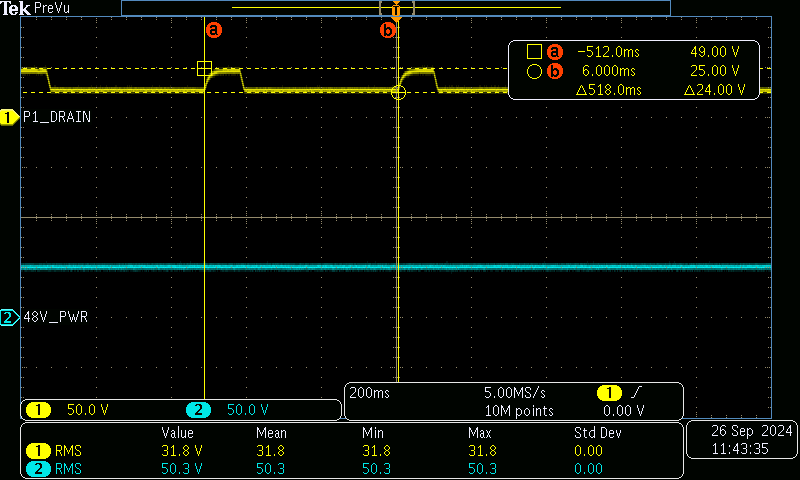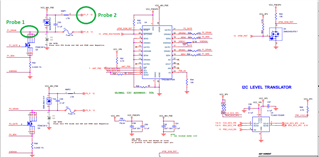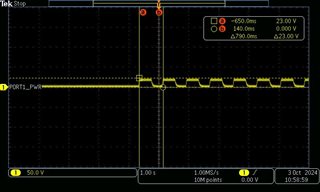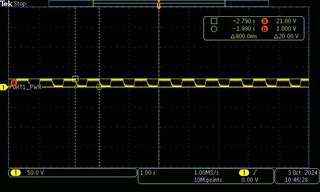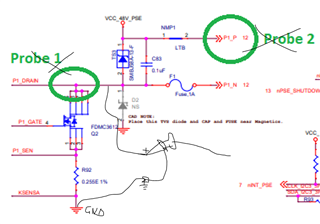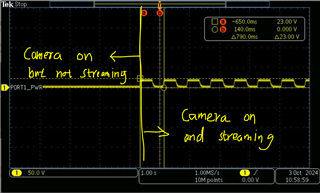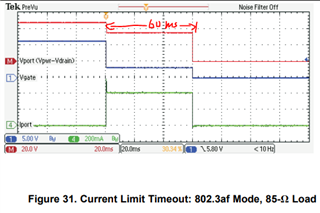Tool/software:
Hi Team,
I'm currently using the TPS23861PWR part in my project to power a PoE-based camera (which is an off-the-shelf component with a built-in PD module that supports the 802.3at standard).
The requirement from my client is to ensure the PoE camera runs continuously for long-term monitoring. However, in some cases, the camera stops streaming, although the device itself remains powered on.
After investigating various potential causes, I suspect the issue might be related to power delivery.
When I connect the PSE (TPS23861PWR) to the PD module, I’ve noticed that the Drain pin on the PSE IC is continuously switching at a 2Hz frequency, (refer the attached waveforms) as if it's still searching for a PD device. On the other hand, my PD device is powered on and functioning. How's this possibly working here?
According to the datasheet, once a PD device is detected and connected, the Drain pin should be driven low, but this isn’t happening in my case.
Could anyone help identify the root cause of this behavior? Why is the PSE still "searching" for a PD device when the PD is already powered?
For reference:
PD Power Consumption:
Voltage: 48V
Current: 40mA
I've attached waveforms for further clarification.
Any insights would be greatly appreciated!